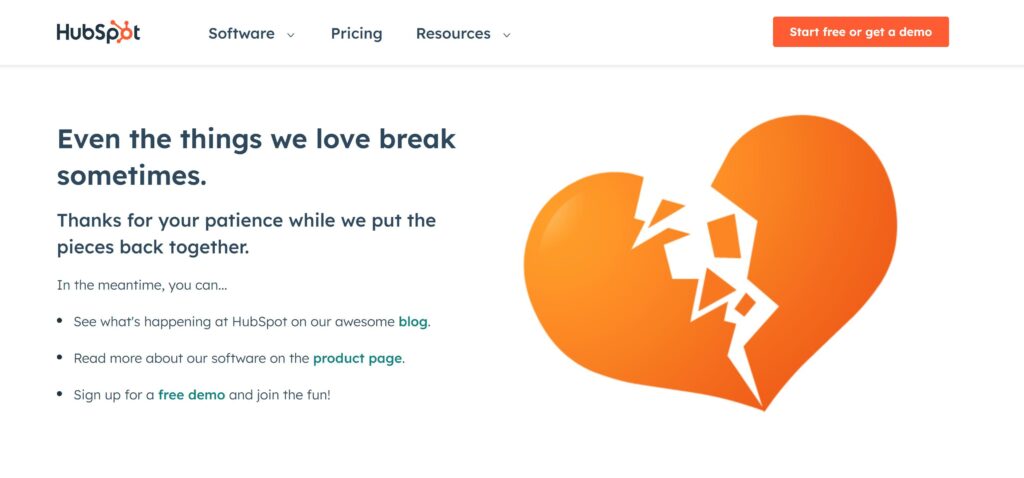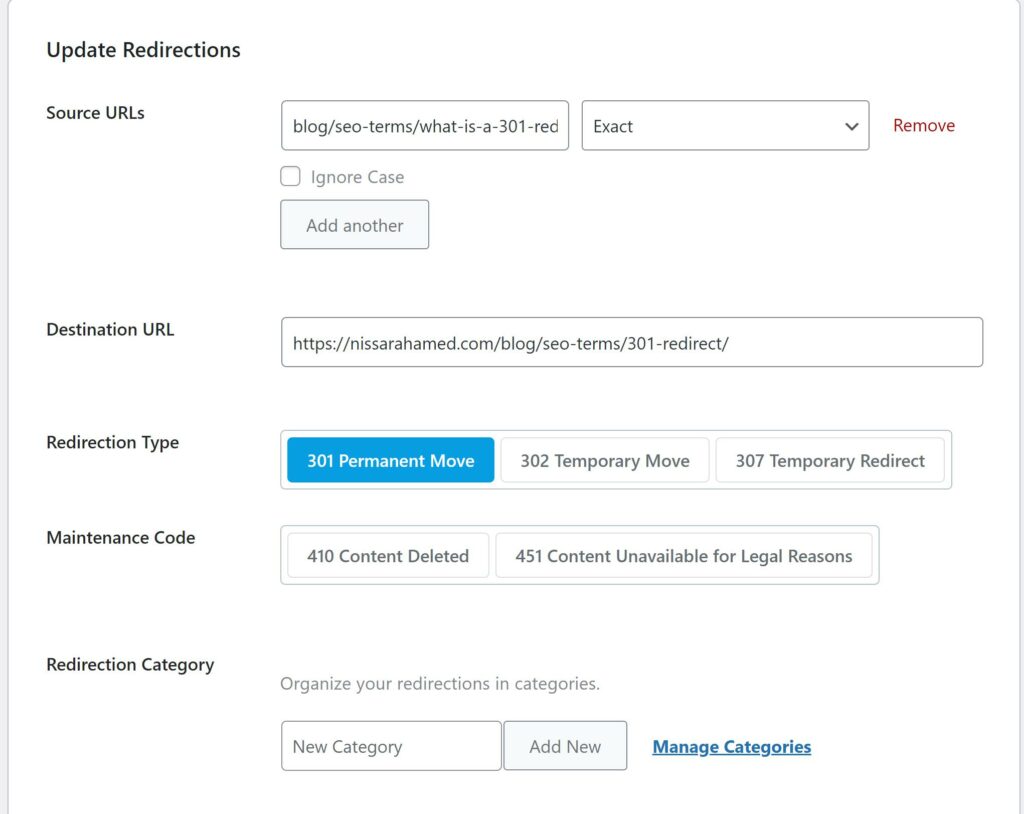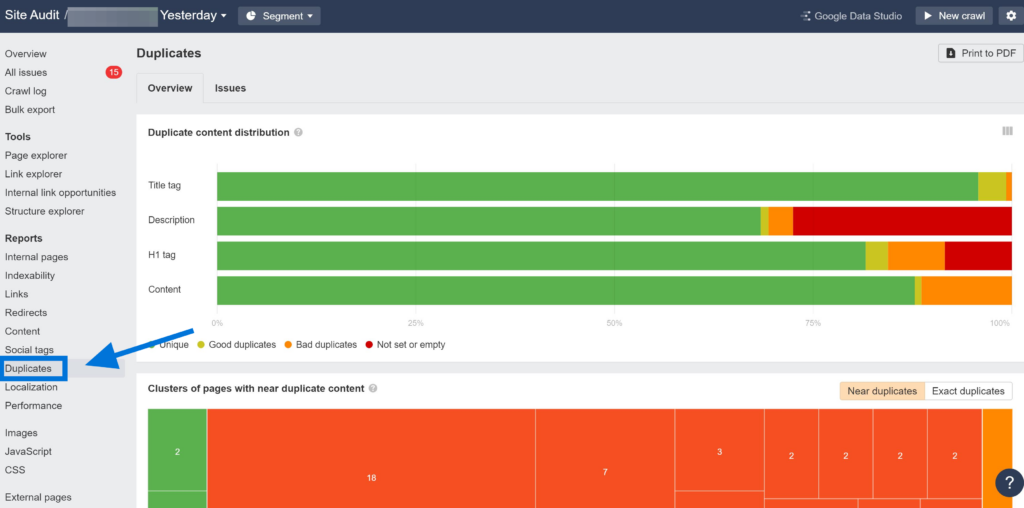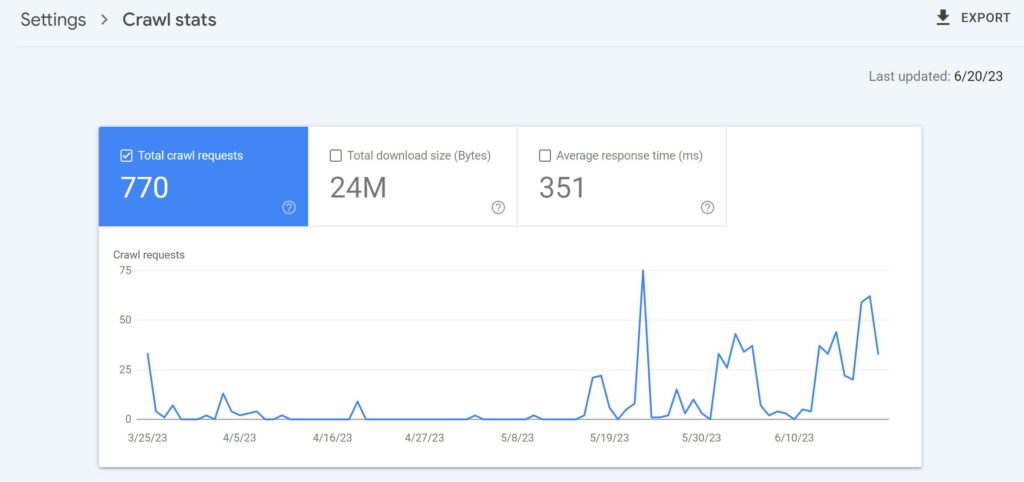Have you ever stumbled upon a dead end while browsing a website? You click on a link, only to be greeted by an annoying “404 error” message. It’s frustrating, right?
But did you know that these seemingly harmless errors can significantly impact your website’s optimization?
Understanding and addressing 404 errors is crucial for any brand or agency striving for online success. These errors affect user experience and play a role in search engine rankings.
Search engines may perceive your website as unreliable or poorly maintained when they encounter numerous broken links or missing pages.
So let’s dive into the world of 404 errors and discover how to tackle them effectively.
- What is a 404 Error?
- Understanding the Causes and Impact of A 404 Error on Website Performance and SEO:
- Examples of Why “Page Not Found” Occurs and Showcasing Effective Web Page Examples:
- Impact of “Not Found” Error on SEO and Site Performance:
- The Importance of Addressing and Preventing 404 Errors for Optimal Website Performance and User Experience:
- Fixing a 404 Error: Best Practices and Techniques
- Preventing 404 Errors: Tips for Proactive Website Management
- Utilizing Google Search Console and Analytics for Identifying and Resolving 404 Errors:
- Troubleshooting Server-Related Issues Causing 404 Errors on Word Press Sites:
- Exploring Other Tools and Resources for Diagnosing and Resolving 404 Errors:
- Additional FAQs on 404 Errors
- Conclusion: Understanding and Resolving the 404 Error
What is a 404 Error?
A 404 error is an error code that indicates the requested webpage cannot be found.

When you encounter a 404 error, it means that the server could not locate the page you were trying to access. This can happen for various reasons, and understanding what causes these errors can help you troubleshoot and fix them.
A 404 error occurs when there is a broken link or when a page has been moved or deleted without proper redirection.
It is important to note that a soft 404 is slightly different from a regular 404 error.
A soft 404 occurs when a webpage displays an error page but still returns a status code of 200, indicating that the page exists.
However, in reality, the content may not be available or relevant to what was originally requested.
Understanding the Causes and Impact of A 404 Error on Website Performance and SEO:
When browsing the internet, you may have encountered a frustrating message that says “404 Error – Page Not Found.”
Several common scenarios can lead to the display of a 404 error page:
- Broken links: When another website links to your site but includes an incorrect URL or the linked page has been removed.
- Deleted pages: If you delete a page on your website without setting up proper redirects, visitors who try accessing it will encounter a 404 error.
- Incorrect URLs: Users may mistype URLs in their browsers, leading to a failure in finding the requested webpage.
- Website restructuring: If you reorganize your website’s structure and fail to update internal links or set up appropriate redirects, users may encounter 404 errors when trying to access old URLs.
- Server configuration issues: Improper server configurations can result in incorrect handling of requests and trigger 404 errors.
When faced with a 404 error, it’s essential to provide users with helpful information on how they can proceed:
- Offer suggestions for alternative pages they might be looking for.
- Include search functionality so users can find relevant content within your site.
- Provide contact information or links to customer support if users need further assistance.
- Ensure that your error page is visually appealing and consistent with the rest of your website.
Negative Consequences of Frequent or Unresolved 404 Errors on Site Performance
Frequent or unresolved 404 errors can have detrimental effects on your website’s performance.
Firstly, they create a poor user experience. When visitors encounter multiple broken links or missing pages, it reflects poorly on your site’s credibility and professionalism.
Users may become frustrated and leave your site, increasing bounce rates and decreasing engagement metrics.
Moreover, search engines take note of these errors as well. When search engine bots crawl your website and encounter numerous broken links or missing pages, it negatively impacts your search engine optimization (SEO) efforts.
Search engines prioritize websites with good user experiences and penalize those with excessive 404 errors.
Broken links frustrate users and harm your SEO efforts by hindering proper indexing by search engines.
When search engine bots come across broken links while crawling your site, they can’t follow them to index new content. This means that any valuable information on those pages may not be included in search engine results.
In addition, outdated URLs can cause SEO issues. When you change the URL structure without implementing proper redirects, search engines will struggle to understand the new organization of your site.
As a result, your rankings may suffer as search engines find it difficult to index and rank your content accurately.
Deleted pages without appropriate redirects can also have adverse effects on SEO.
If you delete a page that has backlinks pointing to it, those links will become broken. This loss of valuable backlinks can impact your site’s authority and visibility in search engine rankings.
Examples of Why “Page Not Found” Occurs and Showcasing Effective Web Page Examples:
Broken Internal Links Resulting in “Page Not Found” Errors
One of the common reasons for encountering a “page not found” error, also known as a 404 error, is due to broken internal links.
When a website has numerous pages interconnected with hyperlinks, it’s possible that some of these links become outdated or broken over time. This can happen when a webpage is moved, deleted, or renamed without updating the corresponding links on other pages.
For example, you are browsing through an online store and clicking on a product link that leads to an error page. This could be because the product was removed from the inventory, but the link to it still exists on other pages.

In such cases, users are often left frustrated with no clear direction on how to find what they are looking for.
To address this issue effectively, websites should regularly perform link checks and fix any broken internal links.
Providing users with helpful information about why they encountered a 404 error and offering alternative navigation options can greatly improve their experience.
Some websites even go the extra mile by including search bars or suggested categories to help users quickly find relevant content.

Outdated URLs Due to Website Restructuring or Content Updates
Another reason for encountering a “page not found” error is outdated URLs caused by website restructuring or content updates.
Websites often undergo changes in their structure or content organization over time to improve the user experience or accommodate new features.
However, if proper redirects are not implemented during these changes, previously existing URLs may become obsolete.
For instance, imagine you bookmarked an interesting article on a blog but later discover that the URL has changed due to site updates. When you try accessing the bookmarked link again, you’ll likely encounter a 404 error since the old URL no longer points to valid content.
To prevent this problem from occurring frequently, website administrators should ensure proper redirects are in place whenever URLs change. This can be achieved by implementing 301 redirects, automatically redirecting users from the old URL to the new one.
Visitors will seamlessly reach the intended content without encountering any “page not found” errors.
Showcasing Well-Designed Custom 404 Error Pages with Helpful Navigation Options
While encountering a “page not found” error can be frustrating for users, websites have an opportunity to turn this negative experience into a positive one by creating custom 404 error pages.
Instead of presenting a generic error message, effective web pages utilize creative and user-friendly designs that provide meaningful guidance to visitors.
For example, many websites include visually appealing graphics or illustrations on their custom 404 pages to capture users’ attention and lighten the mood. These pages often display friendly messages that acknowledge the error and assure users they are in the right place.

They may offer various navigation options, such as links to popular sections, recent articles, or relevant categories.
By incorporating these elements into their custom 404 pages, websites can help users navigate back to valuable content or discover alternative resources easily. This approach reduces frustration and showcases the website’s commitment to delivering an excellent user experience.
Impact of “Not Found” Error on SEO and Site Performance:
The occurrence of 404 errors can have a negative impact on both search engine rankings and the overall performance of a website.
Let’s explore how these “not found” errors can harm your online presence.
Frequent Occurrence of 404 Errors Harming Search Engine Rankings
When search engines crawl websites, they expect to find relevant content that matches the user’s query.
However, encountering multiple 404 errors sends a signal that the website might not be well-maintained or regularly updated.
As a result, search engines may perceive it as less trustworthy and lower its ranking in search results.
To avoid this negative impact on SEO, it is crucial to regularly monitor your website for broken links and fix them promptly.
Ensuring that all pages return valid responses instead of 404 errors can improve your chances of ranking higher in search engine results pages (SERPs).
User Frustration Caused by Encountering Multiple “Not Found” Pages
Imagine landing on a website only to encounter several “not found” pages when trying to access specific information or resources. This experience can be incredibly frustrating for users who are seeking valuable content or attempting to complete an action on your site.
Frustrated users are unlikely to stay engaged with your website or revisit it in the future. They may also share their negative experiences with others, potentially damaging your brand reputation.
Therefore, providing a seamless user experience is essential to minimizing the occurrence of 404 errors.
Decreased Crawlability by Search Engines Due to Broken Links
Search engine crawlers rely on crawling through links to discover new web pages and index them for search results.
When these crawlers encounter broken links leading to 404 error pages, they cannot proceed further into your site’s architecture.
Consequently, important content may remain undiscovered by search engines, leading to reduced visibility in organic search results. It is crucial to regularly audit your website for broken links and fix them promptly to ensure optimal crawlability and indexation.
The Importance of Addressing and Preventing 404 Errors for Optimal Website Performance and User Experience:
Seamless Navigation Through Proper Handling of Broken Links
When browsing the internet, there’s nothing more frustrating than clicking on a link only to be greeted with a “404 error – page not found” message. This common occurrence can disrupt the user experience and lead to visitors leaving your site in frustration.
That’s why it’s crucial to address and prevent 404 errors for optimal website performance.
By ensuring seamless navigation through properly handling broken links, you can keep users engaged and encourage them to explore your website further.
One effective way to achieve this is by implementing redirects. When a user encounters a broken link, instead of displaying an empty page or an error message, you can redirect them to the appropriate page or suggest alternative content they might find useful.

Enhancing User Trust by Providing Relevant Content Instead of Displaying an Empty Page
A 404 error can make users question the reliability and credibility of your website. When they come across a broken link, it gives off the impression that your site may not be well-maintained or trustworthy.
To combat this perception, providing relevant content is essential instead of displaying an empty page when encountering a 404 error.
By customizing your 404 pages with helpful information, such as suggested articles or popular sections of your site, you can show visitors that you care about their experience and are committed to providing valuable content. This approach helps retain users and enhances their trust in your brand.
Improving Overall Site Usability by Minimizing Instances of “Page Not Found”
Many 404 errors scattered throughout your website can significantly impact its usability. Users expect quick access to the information they need without stumbling upon dead ends.
Minimizing instances of “page not found” is crucial for maintaining smooth navigation and improving overall site usability.
Regularly checking for broken links across your site and fixing them promptly is a proactive approach to prevent 404 errors.
Implementing proper redirects when restructuring your website or changing URLs can ensure that users are seamlessly directed to the right page, even if they have an outdated link.
Fixing a 404 Error: Best Practices and Techniques
Implementing Redirects to Guide Users from Outdated URLs to Relevant Content
One of the best ways to fix a 404 error is by implementing redirects.
When users encounter a broken or dead link, they are often directed to a generic error page that provides little guidance.
By setting up redirects, you can guide them from outdated URLs to relevant content, ensuring they don’t frustrate your website.
There are different methods you can use to implement redirects. One common approach is using the .htaccess file on Apache servers. This file allows you to specify rules for redirecting URLs.
For example, if you have recently changed the URL structure of your website and old links are leading to 404 errors, you can set up redirect rules in the .htaccess file to automatically send users to the new URLs.
Another option is using plugins like RankMath or Yoast SEO if you’re using a content management system like WordPress. These plugins provide user-friendly interfaces where you can easily set up redirects without modifying server files directly.

Customizing Informative, User-Friendly, Branded Custom Error Pages
When users encounter a 404 error, providing them with an informative and user-friendly custom error page is important.
Instead of displaying a generic “Page Not Found” message, customize the error page with helpful information and branding elements that align with your website’s design.
The custom error page should clearly explain what went wrong and provide suggestions for finding relevant content. You can include search functionality on this page so that users can quickly search for what they were originally looking for.
Furthermore, make sure that your custom error page reflects your brand identity.
Use consistent colors, fonts, and messaging so that users feel like they are still on your website despite encountering an error.
Conducting Regular Audits to Identify Broken Links or Outdated URLs
To prevent 404 errors from occurring in the first place, it’s crucial to conduct regular audits of your website. These audits help you identify broken links or outdated URLs before they become a problem for users.
Various tools can scan your website and provide you with a list of broken links.
By regularly running these scans, you can proactively fix any issues and ensure a smooth user experience.
Check for any duplicate content on your website, as this can also lead to 404 errors. Duplicate content occurs when multiple pages have the same or very similar content.

Search engines may penalize websites with duplicate content, resulting in lower rankings and potentially more broken links.
Preventing 404 Errors: Tips for Proactive Website Management
Implementing Proper URL Structure and Avoiding Unnecessary Changes
One of the key factors in preventing 404 errors is implementing a proper URL structure and avoiding unnecessary changes.
When you create your website, planning your URLs thoughtfully and sticking with them as much as possible is crucial.
Changing URLs frequently can lead to broken links and result in frustrating experiences for your users.
To ensure a solid URL structure, consider the following tips:
- Use descriptive keywords in your URLs that accurately reflect the page’s content.
- Keep your URLs short, simple, and easy to remember.
- Avoid using special characters or symbols that can cause web browsers or search engine issues.
- Utilize hyphens (-) instead of underscores (_) or spaces between words.
- Create a logical hierarchy for your website by organizing pages into categories and subcategories.
By implementing these practices, you’ll establish a strong foundation for your website’s URLs and reduce the risk of encountering 404 errors due to URL changes.
Monitoring and Updating Internal Links Regularly
Another important aspect of proactive website management is regularly monitoring and updating internal links.
Over time, pages on your site may be renamed, removed, or relocated. If you fail to update internal links accordingly, visitors who click on those links will encounter 404 errors.
To prevent this from happening, make it a habit to check all internal links on your website periodically.
Consider using automated tools specifically designed for this purpose. These tools can scan your site for broken or outdated links, allowing you to fix them promptly.
When updating internal links:
- Ensure that all hyperlinks point to valid pages within your site.
- Update any references to old URLs with their corresponding new ones.
- Double-check that linked pages are accessible by clicking on each link individually.
By consistently monitoring and updating internal links, you’ll maintain a seamless user experience and minimize the occurrence of 404 errors.
Utilizing Automated Tools to Check for Broken Links or Missing Pages
In addition to manual monitoring, leveraging automated tools can significantly aid in preventing 404 errors. These tools are designed to crawl your website and identify broken links or missing pages automatically.
Utilizing such tools saves time and effort while ensuring a well-functioning website.
Some popular automated tools for checking broken links include:
By regularly using these tools, you’ll be promptly alerted to any broken links or missing pages on your site. This allows you to take immediate action, fix the issues, and prevent visitors from encountering frustrating 404 errors.
Remember that proactive management is key.
By implementing proper URL structures, monitoring and updating internal links regularly, and utilizing automated tools, you’ll ensure a smooth browsing experience for your users while maintaining a healthy website.
So keep these tips in mind as you manage your website’s content and structure, minimizing the chances of visitors stumbling upon those dreaded “Page Not Found” messages.
Utilizing Google Search Console and Analytics for Identifying and Resolving 404 Errors:
Using Google Search Console to Identify Crawl Errors and Broken Links
Google Search Console is a powerful tool that can help website owners identify crawl errors and broken links leading to 404 error pages. By regularly checking the Crawl Errors report in Search Console, you can quickly pinpoint any issues that might be hindering your site’s performance.
One of the first steps is to navigate to the “Coverage” section within Google Search Console.

Here, you’ll find a detailed overview of all the URLs on your site and their respective statuses. Look for any URLs marked as “Error” or “Excluded.” These are likely the pages resulting in 404 errors.
To delve deeper into these crawl errors, click on the specific URL listed under the “Error” or “Excluded” category. This will provide more information about why these pages generate 404 errors. It could be due to broken internal links, outdated sitemaps, or even external websites linking to non-existent pages.
Once you’ve identified the source of these crawl errors, take action accordingly. Fix any broken internal links by updating them with correct URLs or redirecting them to relevant pages.
Reach out to other websites linking to your site’s non-existent pages and request them to update their links.
Analyzing Site Performance Data in Google Analytics to Pinpoint Problematic Pages
While Google Search Console helps identify crawl errors, analyzing site performance data in Google Analytics can provide further insights into problematic pages causing 404 errors.
By examining user behavior metrics such as bounce and exit rates, you can determine which pages are leading visitors astray.
Start by navigating to the Behavior section in Google Analytics and select Site Content > All Pages.

Sort this report by bounce or exit rates (whichever metric aligns with your objectives) in descending order. The top-performing pages with a high bounce or exit rates are potential culprits for 404 errors.
Carefully analyze these pages to understand why users are leaving without engaging further.
Does the content need to be updated, relevant, or difficult to navigate?
Are there any broken links within these pages that lead users to dead ends?
Addressing these issues can help reduce the occurrence of 404 errors and improve user experience.
Leveraging These Tools to Track the Effectiveness of Error Resolution Efforts
Utilizing both Google Search Console and Google Analytics helps identify and resolve 404 errors and enables you to track the effectiveness of your error resolution efforts over time.
Regularly monitoring these tools ensures that your website remains free from crawl errors and broken links.
Keep a close eye on the Crawl Errors report in Google Search Console and verify that the previously identified 404 error pages have been resolved.
If new crawl errors emerge, promptly address them by applying similar strategies as mentioned earlier.
In Google Analytics, continue tracking user behavior metrics for previously problematic pages. If you notice a decrease in bounce or exit rates after implementing fixes, your error resolution efforts have succeeded.
Conversely, if certain pages continue to exhibit high bounce or exit rates, consider revisiting them for further improvements.
Remember, resolving 404 errors is an ongoing process.
Troubleshooting Server-Related Issues Causing 404 Errors on Word Press Sites:
Common Server Configuration Problems Leading to 404 Errors on Word Press Websites
Server configuration plays a vital role in ensuring the smooth functioning of your WordPress site. However, there are times when misconfigurations can result in frustrating 404 errors.
Let’s explore some common server-related issues that may be causing these errors and how you can troubleshoot them.
One common culprit behind 404 errors is an incorrect .htaccess file. This file, located in the root directory of your website, contains directives that govern URL redirection and other important settings.
If this file is not properly configured, it can lead to broken links and ultimately result in 404 errors.
To troubleshoot .htaccess file issues, start by renaming the existing .htaccess file to something like “old.htaccess” and create a new one.
Then, visit your WordPress dashboard and navigate to Settings > Permalinks. Clicking the “Save Changes” button will generate a new .htaccess file with the correct configurations.

Another potential cause of 404 errors on WordPress sites is plugin conflicts. With thousands of plugins available for WordPress, it’s not uncommon for conflicts to arise between different plugins or between a plugin and your theme. These conflicts can disrupt proper page routing and trigger 404 errors.
To address plugin conflicts, temporarily deactivate all plugins on your site.
Then, reactivate them one by one while checking if the issue reoccurs after each activation. This process will help you identify the specific plugin causing the conflict so that you can find an alternative or contact its developer for assistance.
Resolving Plugin Conflicts that May Result in Incorrect Page Routing
In addition to troubleshooting server configuration problems and .htaccess file issues, resolving plugin conflicts is crucial for eliminating incorrect page routing, leading to 404 errors on WordPress sites.
When dealing with plugin conflicts, keeping a few things in mind is essential. Firstly, always ensure that your plugins are up to date.
Developers often release updates to address compatibility issues and fix bugs that might cause conflicts.
Secondly, be mindful of the number of active plugins on your site. While plugins can enhance functionality, having too many can increase the likelihood of conflicts.
Regularly review your plugin list and remove any unnecessary ones to minimize potential conflicts.
Lastly, when installing new plugins, thoroughly research their compatibility with your current setup.
Reading user reviews and checking for any reported conflicts will help you make informed decisions and avoid future 404 errors.
By addressing common server configuration problems, troubleshooting .htaccess file issues, and resolving plugin conflicts, you can effectively tackle 404 errors on WordPress sites.
Remember to regularly maintain your server configurations and stay vigilant about plugin compatibility to ensure a seamless browsing experience for your visitors.
Exploring Other Tools and Resources for Diagnosing and Resolving 404 Errors:
Third-Party Online Services that Help Identify Broken Links Across a Website
Various tools and resources are available to assist you in identifying and resolving these issues.
One such option is utilizing third-party online services to identify broken links across a website.
These services work by crawling through your site’s pages and scanning for any URLs that result in a 404 error.
By doing so, they provide you with a comprehensive report highlighting the specific broken links found. This lets you quickly identify which pages need attention and take appropriate action.
Some popular third-party online services for identifying broken links include:
- Broken Link Check: This tool scans your entire website and provides a detailed report of all broken links found. It also offers suggestions on how to fix them.
- Screaming Frog: A powerful website crawling tool that not only identifies broken links but also provides additional information like response codes, page titles, meta descriptions, and more.
- W3C Link Checker: Developed by the World Wide Web Consortium (W3C), this service checks your website’s internal and external links for any errors or issues.
By using these third-party services, web admins can save time and effort in manually checking each page for broken links. They efficiently identify potential 404 errors across your site, allowing you to fix them promptly and improve the overall user experience.
Website Crawling Tools that Provide Comprehensive Reports on Potential 404 Errors
Another useful resource when dealing with 404 errors is website crawling tools.
These tools go beyond just identifying broken links; they provide comprehensive reports on potential 404 errors present throughout your entire website.
Using these tools involves initiating a crawl of your site, where they analyze each page for any issues related to HTTP status codes.
These tools can detect broken links, missing pages, or even misconfigured redirects.
Some popular website crawling tools that help identify potential 404 errors include:
- Google Search Console: This free tool from Google provides valuable insights into your website’s performance in search results. It also alerts you to any crawl errors, including 404s, that it encounters while indexing your site.
- Xenu’s Link Sleuth: A desktop application that crawls through your website and generates a detailed report on broken links, including 404 errors.
- DeepCrawl (Now Lumar): This comprehensive SEO platform offers advanced crawling capabilities and provides detailed reports on various aspects of your website, including potential 404 errors.
By utilizing these crawling tools, web admins gain a deeper understanding of their website’s structure and identify any potential issues causing 404 errors.
Armed with this information, they can take the necessary steps to resolve these errors promptly.
Additional FAQs on 404 Errors
How Can 404 Errors Impact My Website’s SEO?
404 errors can negatively affect your website’s SEO by increasing bounce rates, reducing crawl efficiency, and diminishing overall user experience.
Search engines may interpret frequent 404 errors as a sign of poor quality or outdated content.
Can I Customize the Appearance of A 404 Error Page?
Yes, you can customize the design and content of your 404 error page to provide users with helpful information, alternative navigation options, or even personalized messages.
This customization helps maintain engagement and guides users back to relevant content.
Are There Any Tools Available for Automatically Monitoring and Detecting 404 Errors on My Website?
Several online tools can continuously monitor your website for broken links or missing pages — such as Google Search Console, Screaming Frog, Ahrefs, SEMrush, and Broken Link Checker.
These tools send alerts when they detect 404 errors so that you can take immediate action to resolve them.
Each tool has its own unique features and capabilities, so it’s worth exploring them to find the one that best fits your needs.
Should I Redirect All 404 Error Pages to My Homepage?
Redirecting all 404 error pages to your homepage is not recommended.
Instead, aim to redirect broken URLs to relevant pages with similar content or suggest alternative resources that users might find valuable.
How Often Should I Check for Broken Links on My Website?
It is good practice to check for broken links on your website regularly.
Performing these checks every few weeks or months should be sufficient, depending on the size of your site and the frequency of updates.
Conclusion: Understanding and Resolving the 404 Error
In conclusion, understanding and resolving the 404 error is crucial for maintaining optimal website performance and user experience.
By now, you have gained insights into what a 404 error is, its causes, its impact on SEO and site performance, and effective ways to address and prevent it.
It is important to remember that encountering a “page not found” message can negatively affect your website’s credibility and user trust.
Visitors who stumble upon broken links or missing pages may become frustrated, leading to higher bounce rates and potentially lost conversions. Therefore, taking proactive measures to resolve 404 errors is vital.
To fix a 404 error effectively, follow best practices such as redirecting broken URLs to relevant pages or providing helpful suggestions for alternative content.
Doing so can keep users engaged on your site and minimize any negative impact on search engine rankings.
Preventing 404 errors requires ongoing website management.
Regularly check for broken links or outdated content that could generate these errors. Implementing proper URL structure and utilizing redirects when necessary will help ensure a smooth user experience.
Leveraging tools like Google Search Console and Google Analytics can greatly assist in identifying and resolving 404 errors. These platforms provide valuable insights into which pages generate errors, allowing you to take appropriate action promptly.
For WordPress sites specifically, troubleshooting server-related issues causing 404 errors may involve examining plugins or themes that could be conflicting with each other.
Ensuring compatibility between different components of your WordPress setup is essential for preventing these errors from occurring.
Various other tools and resources available can aid in diagnosing and resolving 404 errors efficiently.
Exploring these options will enable you to find the most suitable solution for your specific needs.
Remember that addressing the issue of 404 errors aligns with Google’s E-A-T concept (Expertise, Authoritativeness, Trustworthiness).
You can build trust with both visitors and search engines by demonstrating your expertise in maintaining a functional website and providing a positive user experience.
In conclusion, pay attention to the significance of understanding and resolving 404 errors. Take proactive steps to address them promptly, ensuring your website remains user-friendly, trustworthy, and optimized for search engine visibility.
